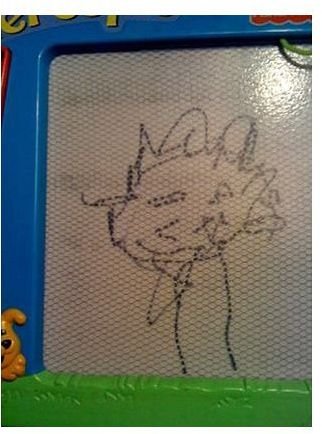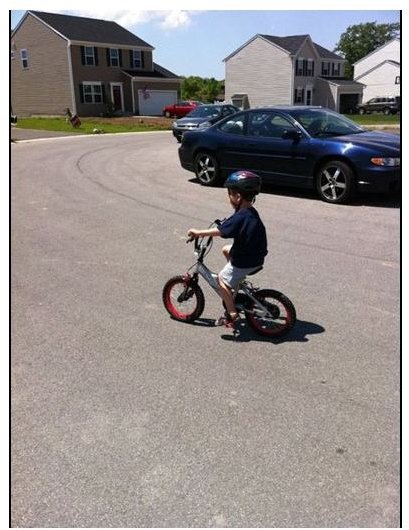Exploring and Defining the Types of Play for Preschoolers
Play is Hard Work
Often kids pretend that when they are playing, they are “working”. This is true in a sense, for play is a lot of work for these little guys. They are constantly on the move, using their imaginations and creating masterpieces through their art work.
Over the years, it has been proven that children learn through play. It is how they begin to understand their world and how they develop language skills, socialization skills and critical thinking skills. There are even schools such as Montessori schools that are designed with the notion that children learn best through play. To aid preschoolers in their development, play is recognized as an important part of their learning process in school. Through playing, children are given the opportunity to learn various concepts that will aid them in their future school years.
Next we will look at six different types of play preschoolers engage in. Each of these categories contribute to the child’s development and learning, and tend to overlap, but are the main foundations of how they play.
Collaborative
This may also be called cooperative play. This takes place with a group of friends. Children learn from interacting and watching other children. At this stage in play, children learn to share and take turns. They master the art of negotiation and learn to obey rules. For example, they may say, “I will give you these two green cars for your red car.” All of these lessons may be hard for children to learn because after all, preschoolers believe they are the center of the universe. Cooperative play is essential for preschoolers because this is where they learn and develop their social skills. Children need to experience a variety of social situations and by interacting with other children they are learning to develop a sense of values and morals that they will continue to use through their adult life.
Imaginary
Pretending you are an astronaut, Batman or a princess are just a few ways preschoolers use their imagination and pretend to be something other than themselves. It’s a fun way for them to imitate what they see in the real world and on television. You often see preschoolers use their imagination when they are bored. They tend to use their imagination to fill the need for play and entertainment at that particular moment. You may recognize this as “make-believe” play. Pretending is a huge part of a preschooler’s development. This is another type of play that encourages social skills and teaches them to be resourceful in a way.
Physical
Preschoolers are very active. Physical play is when children use their whole body to play such as riding a bike, jumping rope, playing kickball or swinging at the park. They utilize their gross motor skills to extract energy. Physical play is important especially these days when childhood obesity is on the rise. They are learning to enjoy exercise, develop large muscle tone, and learn how to take turns. This is also the time when preschoolers start to learn to accept losing and winning.
Creative

This type of play consists of using art materials such as crayons, clay, paint, glue, markers, scissors, etc. They use their imagination to create a work of art from scratch. Creative play is often observed during quite time and done alone or in a small group setting. For the preschoolers that are more shy or introverted, this is the opportunity for them to show their “creative” side by using their fine motor skills. Creative play is important for preschoolers because it helps develop their imagination and having the opportunity to master a particular skill will help develop their confidence. Fine motor skills are weak in some children this age, so accomplishing cutting, tracing, painting, etc. will help further develop small muscle control.
Dramatic

This type of play is fantasy directed. Children explore the world through acting out scenarios by dressing-up and assuming character roles. They use toys as props and take on imaginary roles that represent adults and characters. Many preschool classrooms have “dress-up” centers so students can express themselves using props. This is also where they use their imagination to transform an object into whatever they want it to be. They will pretend a block is a race car or a pencil is a microphone.This type of play is important because it helps them strengthen their language skills by imitating and role playing what they see. It also helps them learn to think in abstract ways by encouraging them to think beyond their more familiar world. It also helps them develop their social skills and and emphasizes originality and uniqueness.
Constructive
This is when children manipulate objects or small toys to create something. An example would be to use their own creativity to construct a doghouse for a dog to go in. This type of play involves using their hand-eye coordination and fine motor skills. This type of play is important for many reasons, as it helps children develop skills such as stacking or rearranging blocks. It is an important part of building the child’s confidence. It also helps them develop their imagination, encourages innovation and social skills.
Benefits of Play
During play preschoolers learn shapes, colors, sizes, counting and explore textures. They learn how to manipulate objects, develop strategies and solve problems. They learn socialization skills, how to play cooperatively, teamwork and an understanding of “rules”. Play releases both physical and emotional energy. Play allows children to use their imagination and think outside the box. It’s through play that children develop their moral identity and show their strengths and weaknesses. They are also using their senses and gaining physical, cognitive and mathematical skills. They are developing social skills such as, sharing, compromising and negotiating. They are practicing their language skills through conversations with their peers and enhancing their self-esteem through their accomplishments, all while mastering critical thinking skills and learning to become independent. Through these types of play, preschoolers will develop the skills that will help prepare them for adult situations and overall success in life.
What Does Research Say?
According to a study conducted at the University of Maryland, children’s playtime has decreased and it is no surprise that childhood obesity is now an epidemic. Research has shown that play is crucial to a child’s physical development. In one report from the American Academy of Pediatrics, play was reported to promote brain and behavioral development. As far as the specific types of play, researcher Sara Smilansky’s studied sociodramatic play and found that when playing make-believe, children learn social development which leads to a greater success in school. Throughout all of the studies, research has proven that play helps children develop skills that they can’t get anywhere else.
References
Ezzo, Gary and Marie. Preschoolers and the Benefits of Play, https://www.gfi.org/java/jsp/article14.htm
Gelman, Pam. How Important is Play in Preschool? https://www.greatschools.org/parenting/social-skills/1180-play-in-preschool.gs?page=1
Types of Play, https://www.mesacc.edu/dept/d46/psy/dev/Spring98/earchild/index.html
Elkind, David. Can We Play? https://greatergood.berkeley.edu/article/item/can_we_play/
Image Credit: Janelle Cox
